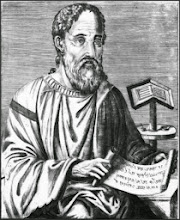Links to various translations of The Infancy Gospel of Thomas may be found on Peter Kirby’s Early Christian Writings site:
http://www.earlychristianwritings.com/infancythomas.html
(1) Any narrative which purports, on the face of it, to be telling about events that actually happened deserves to be treated as true unless it can be demonstrated not to be. Thus, there is an initial presumption of historicity for The Infancy Gospel of Thomas. Many skeptics, however, apply an unwarranted and unreasonable skepticism to it. If we read all ancient historians the way skeptics read the Thomas, we would have to throw out nearly all of ancient history. Some skeptics claim that the work is not intended to be read as history of actual events that really happened, but some of these same skeptics also claim that the gospel is meant to show Jesus’ omnipotence. How would this purpose be served if the events in it were known by the author or his readers not to have happened? Thus the argument the author is making requires that he and his audience believe what he is saying.
(2) Others are skeptical of Thomas because it tells about miraculous events in the life of Jesus. But rejection of miracles or supernatural events is based on philosophical or ideological, not historical grounds. All of the gospels agree that Jesus was capable of working miracles, and if Jesus was the incarnation of God, as the Christian faith claims, then he had the power to do these things.
3) The narrative lacks fantastic details and theological comment and development. Thus, the restrained manner in which the narrative is told favors historicity. For instance, in one story Jesus speaks and a boy dies. No elaborate description of the death is given. The narrator simply says the boy died and does not comment on how this shows Jesus’ power or anything of the sort. Similarly, in the story of Jesus raising the boy who fell from the roof from, the narrative is simple and unadorned. The boy does not give an account of death or the afterlife as a fantasy might be expected to do. The stories in Thomas have the tone of a simple report of fact. They “ring true.”
(4) Many of the stories in the gospel fulfill what is known as the criterion of embarrassment. The early Christians proclaimed a Jesus who was forgiving and just. They would not have invented stories that might make Jesus appear vengeful or capricious as he might seem to be in some of the stories in the gospel. Thus, these stories must be firmly rooted in early tradition, though suppressed by the canonical gospels.
(5) Several of the stories in the gospel exhibit a level of psychological realism that is not found in ancient biography. Ancient biography had a static conception of character and incidents from childhood were used to show how the child at an early age already had the characteristics of the adult he would become. But Thomas shows Jesus as a child who is not yet in command of himself and his powers and seems to act “childish.” This shows an awareness of human development well beyond the narrative abilities of ancient writers of fiction; to posit such is to posit the unique and unexampled.
(6) The Infancy Gospel of Thomas shows no indication of late date, nor any sign of dependence on the canonical gospels. Thomas is addressing non-Jewish brethren, probably in the 40’s. Despite the fact that Jesus goes to the temple and teaches better than the elders there, there is no allusion to the temple’s destruction. Only the last story in Thomas is paralleled in the canonical gospels. But unless we were to claim that that Luke made up the story of the child Jesus in the temple, there is no reason to posit dependence. While our manuscripts of Thomas may be fairly late, this is no indication that the work was actually composed at a late date. No one would date Tacitus or Homer by the date of their manuscripts. Some of the traditions in IGT are attested in the second century. The fact that Thomas has so little material parallel to the canonical gospels shows that he was not copying them.
(7) Many of the details of Thomas’ narrative are extraneous to his alleged theological purposes, yet fit well with a Palestinian provenance and fail to show signs of later development. For instance, scholars and Pharisees are presented as having a favorable reaction to Jesus, yet these are groups that would have been denigrated by Christian authors writing at a later time. Also, when quoting, the narrator uses the more commonly Jewish term “Spirit of God”, but when narrating in his own voice he uses the more common contemporary Christian term “Holy Spirit.” Thus, he is careful to preserve the actual words spoken and not to substitute the terms he and his audience would normally use.
(8) Some would doubt the historicity of the events recorded by Thomas simply because they are not also recorded in other sources. Of course, the story of Jesus in the temple is also told by Luke and thus enjoys multiple attestation. Further, this shows that where Thomas can be checked against other sources, he is accurate. The fact that there are other places where Thomas cannot be checked against the canonical gospels by no means counts against his accuracy. That would simply be an argument from silence. Absence of evidence is not evidence of absence. The testimony of one witness is surely more important than the silence of four. The canonical gospels largely pass over the period covered by Thomas, and John specifically admits that he is presenting only a selection of Jesus’ miracles. To insist on outside support for all the stories is to require from Thomas a standard that is not required of other texts.
(9) The author identifies himself simply as, “Thomas the Israelite.” He does not need to identify himself further. Who, in the early church, could have called himself simply “Thomas” without further qualification? A later pseudonymous writer would have made a point of explicitly claiming to be the Thomas who was an eyewitness of Jesus’ ministry. In the IGT, this identification is simply understood and was presumably known by his audience. The frequent mentions of Jesus’ mother Mary and the notes that “she kept to herself what she had seen him do” suggests that she was the source Thomas relied on for much of his material in The Infancy Gospel.
(10) There is no known precedent among Jews or Christians of the period for creating miracle stories out of scripture and claiming them to be recent history. The gospel is not a midrash on the Old Testament, nor on the canonical gospels, nor on any other known text. Skeptics will no doubt suggest that some of the stories in Thomas, such as the viper story or the tree story, are creative expansions of stories found in the New Testament. But this fails to take into account the vast differences between the stories. And even if the stories in Thomas were told in a similar way to other stories in the pre-canonical tradition, this would not by any means show that the incidents related by Thomas were untrue or did not happen.
We may not yet have enough evidence to “prove” everything in The Infancy Gospel of Thomas is true, but it would be dangerous and premature to convict Thomas of falsehood

